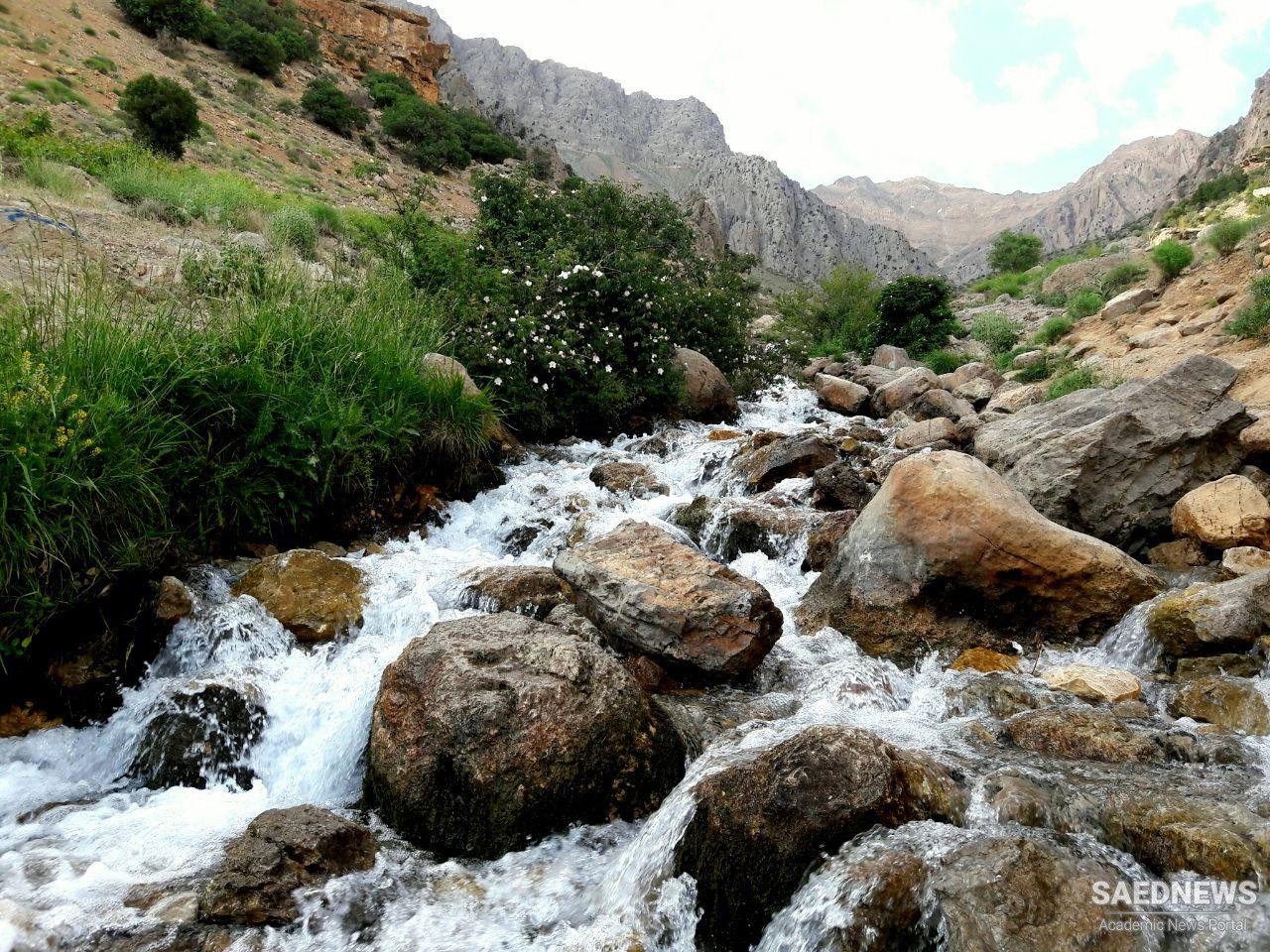The highest point is Dena Mountain with a height of 4409 meters above the sea level. Considering the geographical features of this province, the more you move from the north-eastern mountains to the south-western areas, the height of the mountains and the humidity of the weather significantly decreases which causes this province to have two distinct cold Boyer-Ahmad and hot Kohgīlūye regions. Therefore, from the earliest times of civilization, Iranian nomads have found it an ideal home.
One of the most important protected territories of the wild life in this province is called Dena which is rich in terms of species of plants and animals. There are different kinds of trees, forest plants, lawns, herbs, and edible plants-- crucial economical resources for local people. This area is also the home of many species of animals such as large brown bears, leopards, wolves and wild cats as well as birds like eagles, hawks, partridges, skylarks and some other local birds like Kamarkoli and Sangcheshm.
Music among Boyer Ahmadi nomads—like other tribes of nomads --- enjoys a high respect. These tribes of Boyer-Ahmadi nomads play and sing special folk songs called "Ghass". The musical instruments used to compose such songs are kettledrum, Iranian oboe and a kind of reed flute called Pīsheh. Common folk dances include the Dopā, Sarpā, Chūb, Sad Dastmālī, Yālābeh, Bakhtīārī, Narmeh-Narmeh and Torkī Shah Farangī.
Making handicrafts is a common art and a source of income among the nomad tribes of this province. They have been involved in carpet weaving, drugget weaving, coarse blanket weaving and Gachmeh weaving. The people in Kohgīlūye Va Boyer-Ahmad have Lur ancestors and they also speak in Luri dialect.
Lake Kūh Gol
This lake is located 33 km north of the city of Yāsūj, near the famous Bījan Pass. This lake is the natural habitat of local and migrating birds such as storks, cranes, geese and different kinds of ducks. Around the lake, you can find vegetation like clematis, oregano and other kinds of wild plants.
The Ancient City of Dehdasht
Based on historical documents, this city was called Belād Shāpūr in the past and was built by King Shāpūr I of the Sassanid dynasty (224-651). The city was very populated and different facilities like public baths, mosques, caravanserai and almost two thousand houses were built to create the comfort of city-life, it is all in ruins now.
The building materials used to make the buildings were stone, mortar of plaster and the mortar of lime, soil, ash and sand. Only in the dome of the public bath, pieces of brick were used.
Sisakht Village
This village is located 35 km north-west of Yāsūj on the foothills of a mountain. This village is surrounded by three mountains called Dinar Mountain, Koh Mountain and Zangūyeh Mountain. There is heavy snowfall starting from late autumn to the early spring. This is also a fascinating region for skiing fans.
Tang-e Sarvak Historical Monuments
In some mountainous parts of Kohgīlūye Va Boyer-Ahmad, there is a pass called Sarvak or Sūlak. There are many stone carvings in this area which are stated that it would belong to Parthian Kingdom (124-91 BC). Common subjects of these carvings include wars, worshiping God and coronation of kings.
Kheyrābād Temple
This temple is located between the cities of Dehdasht and Behbahān, close to the north of the village of Dodeh. This temple dates back to the Sassanid era (224-651) and consists of four arches made of stone and mortar of plaster and lime. This temple is highly valued and respected by Zoroastrians as a pilgrimage site.
Crown Imperial
These species of plants are only found in Zāgros Mountain Range with red and yellow colors which have increased the beauty of this area.


 Ilam Province the Cradle of Persian Civilization
Ilam Province the Cradle of Persian Civilization














































